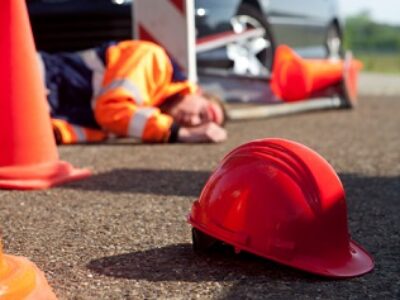Recently, we covered the topic of reporting a concern to OSHA if you were worried about dangerous conditions at work. At the Law Offices of Hussain & Gutierrez, we are aware that numerous workplace accidents occur annually on job sites throughout California and the United States. Many of these prompt an automatic inspection by OSHA officials. You may be interested in learning how inspections are conducted, as well as which types of accidents or conditions necessitate immediate inspections.
Why OSHA Inspections Matter for Workers
The U.S. Occupational Safety and Health Administration (OSHA) conducts more than 30,000 inspections annually, focusing on workplaces where the risk of injury or illness is highest. These inspections are critical because they not only enforce safety regulations but also protect employees from ongoing hazards that could result in severe or fatal injuries.
However, OSHA cannot respond to every single report. Officials prioritize inspections based on the severity of the situation and whether employees are facing an immediate threat. Understanding how inspections work, why they are triggered, and what rights you have as a worker is essential for both your safety and your ability to seek compensation if you are injured.
Common Triggers for OSHA Inspections
OSHA prioritizes inspections when certain high-risk situations occur. Among the most urgent are:
- Multiple Hospitalizations: If two or more workers are hospitalized due to a job-related accident, OSHA will typically open an investigation within 24 hours.
- Fatal Accidents: Any workplace fatality requires an immediate inspection.
- Injured Minors: If an employee under 18 is hurt, OSHA views this as a severe violation and responds quickly.
- Imminent Danger: Conditions that could cause death or serious harm at any moment, such as exposure to toxic chemicals or unsafe scaffolding, trigger urgent inspections.
- Repeat Offenders: Companies with a history of violations or poor safety records are subject to heightened scrutiny.
In addition, OSHA responds to employee complaints and referrals, even if no accident has occurred, particularly if workers report unsafe machinery, lack of protective equipment, or failure to follow basic safety procedures. Programmed inspections also occur in high-risk industries such as construction, manufacturing, and agriculture, where the likelihood of injury is statistically higher.
What Happens During an OSHA Inspection?
An OSHA inspection follows a structured process:
- Opening Conference: The compliance officer explains the reason for the inspection, reviews employer records, and discusses the scope of the visit. Employers may present safety logs, training documents, and incident reports at this stage.
- Walkaround Inspection: The officer tours the workplace, observes operations, and may conduct interviews with employees. If a hazard is observed, OSHA has the authority to expand the inspection beyond the initial scope.
- Closing Conference: Findings are presented to the employer. In some cases, violations can be corrected immediately. In more serious cases, OSHA issues citations with deadlines for the employer to take corrective action.
The entire process can last anywhere from a single day to several weeks, depending on the complexity of the workplace and the severity of reported hazards.
OSHA Penalties and Consequences for Employers
When violations are confirmed, OSHA may issue fines that vary depending on the seriousness of the infraction. For 2025, penalties can reach up to $16,131 per serious violation and more than $161,000 for willful or repeated violations. Employers may also face daily penalties if they fail to correct hazards by the assigned deadline.
These penalties not only impose financial consequences but can also damage an employer’s reputation, affect business contracts, and increase workers’ compensation insurance costs. For employees, these findings may serve as valuable evidence when proving unsafe conditions contributed to an injury.
Employee and Employer Rights During Inspections
Both employees and employers have specific rights during inspections:
- Employee Rights: Workers have the right to speak confidentially with inspectors, share evidence of unsafe practices, and file complaints without fear of retaliation or retribution. Federal law, including Section 11(c) of the Occupational Safety and Health Act, strictly prohibits employers from firing or punishing workers who report hazards.
- Employer Rights: Employers can accompany inspectors during the walkaround, provide documentation, and later contest citations if they believe findings are inaccurate. They may also request extensions to correct violations if immediate compliance is not possible.
Understanding these rights ensures inspections remain transparent and fair for all parties involved.
Federal OSHA vs. Cal/OSHA
While OSHA is the federal agency overseeing workplace safety, California operates its own program under Cal/OSHA. In many cases, Cal/OSHA enforces stricter standards than those set by OSHA. For example:
- Heat Illness Prevention: Cal/OSHA requires specific protections for workers exposed to high temperatures, whereas federal OSHA does not mandate the same level of protection.
- Industry-Specific Rules: California applies additional rules to agriculture, construction, and healthcare facilities.
- Penalties and Timelines: Cal/OSHA may impose different deadlines for correction and higher penalties for repeated violations.
For workers, this means additional protections but also more complex rules that may require legal guidance to navigate after an inspection.
How OSHA Inspections Connect to Workers’ Compensation
Safety inspections and workers’ compensation are closely linked. While OSHA does not provide financial benefits to injured employees, its findings often strengthen compensation claims. For example:
- If OSHA documents unsafe machinery or missing protective equipment, this can demonstrate employer negligence.
- Workers’ compensation benefits, such as medical care, temporary disability payments, and permanent disability awards, may still apply even if no citation is issued.
- Retaliation for reporting hazards is illegal, and legal support may be necessary to protect your job while you pursue compensation.
At Hussain & Gutierrez, we regularly represent employees who have been injured on the job and need to understand how OSHA’s role interacts with their workers’ compensation rights.
Preparing for an OSHA Inspection as an Employee
Workers can play a vital role in ensuring inspections are effective. If you believe an inspection is likely or underway:
- Document Hazards: Take notes, photos, or videos of unsafe conditions to document them for future reference.
- Keep Medical Records: If you or others have been injured, preserve all medical documentation.
- Know Your Rights: Understand that you have the right to request anonymity and cannot be legally punished for reporting unsafe conditions.
Being proactive helps protect both your rights and your safety.
Frequently Asked Questions (FAQs)
How soon does OSHA respond to a fatal accident or multiple hospitalizations?
Inspections usually begin within 24 hours of notification in these cases.
What if my employer fixes the problem before the inspection?
OSHA may still conduct the inspection to confirm compliance and determine whether past violations should result in citations.
What happens if no violations are found during an inspection?
The inspection closes without citations, but workers still maintain the right to pursue workers’ compensation if they were injured.
How long do employers have to fix violations?
Deadlines vary by severity, but employers may be required to correct hazards immediately if they pose imminent danger. Serious violations usually have 15 to 30 days for compliance.
How does an OSHA inspection differ from an insurance investigation?
OSHA inspections are conducted by federal or state safety officials to enforce compliance, while insurance investigations focus on liability and claims management. Both can affect your case, but OSHA findings often carry greater legal weight.
Protecting Your Rights After an OSHA Inspection
If you have been injured at work or believe your workplace is unsafe, an OSHA inspection may provide important evidence but it does not guarantee financial support for your recovery. Workers’ compensation is designed to cover your medical care, lost wages, and rehabilitation, and pursuing these benefits often requires legal guidance.
At Hussain & Gutierrez, our attorneys understand both workplace safety laws and the workers’ compensation system. We help employees use OSHA findings to strengthen their claims, defend against retaliation, and secure the full benefits they deserve.
If you or someone you know has been affected by a workplace accident, unsafe conditions, or an OSHA inspection, contact Hussain & Gutierrez today. Our experienced workers’ compensation attorneys will guide you through the claims process and protect your rights every step of the way.



